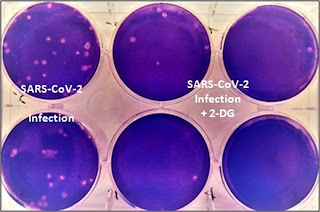Mucormycosis is a fungal infection caused by
molds (mucormycetes). These fungi are present in soil and in decaying organic
matter e.g., compost, rotten woods, dungs etc. Spores of these fungi are present
throughout in the environment. When any person with health issues (e.g., diabetes
etc.) and weak immunity come in contact with fungal spores they get mucormycosis.
Types
of mucormycosis
1. Rhinocerebral (sinus and
brain) mucormycosis: this infection spread to the
brain from sinuses and most common in persons with uncontrolled diabetes and in persons who have had a
kidney transplant.
Symptoms- One-sided
facial swelling, headache, nasal or sinus congestion, black lesions on nasal
bridge or upper inside of mouth that quickly become more severe, fever.
2. Pulmonary (lung)
mucormycosis: this is the most common infection in cancer
patient and in person who have had organ transplant.
Symptoms- Fever,
Cough, Chest pain, shortness of breath.
3. Gastrointestinal
mucormycosis: this infection is common in
lower age group people who have weak immunity.
Symptoms- Abdominal
pain, nausea and vomiting, gastrointestinal bleeding.
4. Cutaneous (skin) mucormycosis: spores enter in the body through skin. When any break in the
skin occurs (by injury etc.) spores of fungi get entered in the body through
broken skin.
Symptoms- Blisters
or ulcers, infected area may turn black, pain excessive redness, swelling
around the wound.
5. Disseminated mucormycosis: in this
infection spores transport through bloodstream to different organs. Brain is the commonly affected part; it can also affect spleen and
heart.
Symptoms- Mental
status changes, coma.
Causative
agent:
Rhizopus species, Mucor species, Rhizomucor species, Syncephalastrum species, Cunninghamella
bertholletiae, Apophysomyces species, and Lichtheimia (formerly Absidia) species.
Treatment
Mucormycosis is treated by antifungal medicine like amphotericin B (intravenous),
posaconazole (intravenous/oral), or isavuconazole (intravenous/oral). Often,
mucormycosis needed surgery to remove the infected part.







